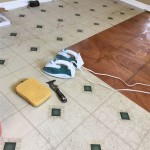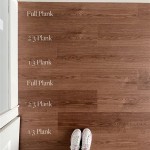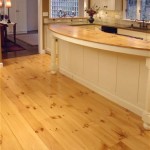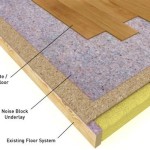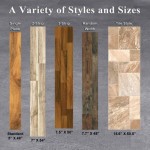How To Remove Double-Sided Carpet Tape From Hardwood Floors
Double-sided carpet tape, while useful for securing rugs and carpets to hardwood floors, often leaves behind a stubborn residue when removed. This residue can be unsightly, sticky, and potentially damaging to the floor's finish if not addressed properly. Effectively removing this adhesive requires patience, the right tools, and a systematic approach. This article provides a comprehensive guide on how to safely and effectively remove double-sided carpet tape residue from hardwood floors.
The challenges associated with removing carpet tape residue stem from the adhesive's properties. It's designed to bond strongly to both the carpet and the floor, and as it ages, the adhesive can harden and become more resistant to removal. Furthermore, the type of hardwood floor finish, such as polyurethane, varnish, or wax, will dictate the appropriate cleaning agents and techniques to use. Using the wrong method can strip the finish, dull the shine, or even damage the wood itself. Always test any cleaning solution in an inconspicuous area before applying it to a larger surface to ensure it doesn't cause any adverse effects.
Before starting the removal process, gather the necessary tools and materials. This typically includes a plastic scraper, a heat source (such as a hairdryer or heat gun), various solvents (such as mineral spirits, rubbing alcohol, or adhesive remover specifically designed for hardwood floors), soft cloths, a vacuum cleaner, and protective gloves. Selecting the right tools is crucial for minimizing the risk of scratching or otherwise damaging the hardwood floor. Avoid using metal scrapers or abrasive pads, as these can easily mar the surface.
Key Point 1: Softening the Adhesive
The first step in removing double-sided carpet tape residue is to soften the adhesive. This makes it easier to scrape away without damaging the underlying floor finish. Applying heat is a common and effective method for softening the adhesive. A hairdryer or heat gun can be used on a low setting to gently warm the residue. Hold the heat source a few inches away from the floor and move it back and forth to avoid overheating a single spot. The goal is to make the adhesive pliable, not to melt it completely, which could make the residue even stickier and harder to remove.
In addition to heat, certain solvents can also help to soften the adhesive. Mineral spirits, also known as paint thinner, is a commonly used solvent for removing adhesive residue. Apply a small amount of mineral spirits to a clean cloth and gently rub it onto the tape residue. Allow it to sit for a few minutes to penetrate and soften the adhesive. Always work in a well-ventilated area when using mineral spirits, and wear gloves to protect your skin. Isopropyl alcohol (rubbing alcohol) is another milder option that can be used, especially on floors with sensitive finishes. Test the solvent in an inconspicuous area first to ensure it does not damage the floor's finish.
Once the adhesive has been softened with heat or solvent, use a plastic scraper to gently lift the residue. Work slowly and carefully, applying gentle pressure to avoid scratching the floor. If the residue is particularly stubborn, reapply heat or solvent as needed. Avoid using excessive force, as this can damage the hardwood floor. The objective is to gradually lift the adhesive away from the floor, rather than trying to tear it off in large chunks.
Another option is to use a specialized adhesive remover designed specifically for hardwood floors. These products are formulated to dissolve adhesive residue without damaging the floor's finish. Follow the manufacturer's instructions carefully, and always test the product in an inconspicuous area first. These removers often come in spray or gel form, making them easy to apply to the affected area.
Key Point 2: Selecting and Applying the Appropriate Solvent
Choosing the right solvent is crucial to avoid damaging the hardwood floor. As previously mentioned, mineral spirits and isopropyl alcohol are common choices, but other options exist. Citrus-based cleaners can be effective for removing adhesive residue and are generally considered safer than mineral spirits. However, it is still important to test these cleaners in an inconspicuous area first, as some citrus-based products can be acidic and may damage certain finishes.
When applying any solvent, it is essential to use a clean, soft cloth. Avoid using abrasive pads or scrub brushes, as these can scratch the floor. Apply a small amount of solvent to the cloth and gently rub it onto the tape residue. Allow the solvent to sit for a few minutes to penetrate the adhesive. Do not pour the solvent directly onto the floor, as this can cause it to seep into the seams and potentially damage the wood.
For particularly stubborn residue, try creating a poultice. Soak a cotton ball or a small piece of cloth in the solvent and place it directly on the adhesive residue. Cover the poultice with a piece of plastic wrap to prevent evaporation and allow it to sit for several hours or even overnight. This will give the solvent more time to penetrate and soften the adhesive. After removing the poultice, gently scrape away the softened residue with a plastic scraper.
Remember to always work in a well-ventilated area when using solvents. Open windows and doors to allow fresh air to circulate. Wear gloves to protect your skin from the chemicals in the solvents. If you are sensitive to chemicals, consider wearing a respirator mask to avoid inhaling the fumes.
Key Point 3: Removing Remaining Residue and Cleaning the Floor
After removing the bulk of the tape residue, there may still be a thin layer of adhesive remaining on the floor. This residue can be difficult to see, but it will feel sticky to the touch. To remove this remaining residue, repeat the softening and scraping process as needed. Use a clean cloth and a small amount of solvent to gently rub the area until the residue is gone.
Once the residue has been completely removed, it is important to clean the floor to remove any remaining solvent or cleaning product. Use a damp cloth to wipe the area clean, and then dry it thoroughly with a clean, dry cloth. Avoid using excessive water, as this can damage the hardwood floor. If necessary, use a floor cleaner specifically designed for hardwood floors to remove any lingering residue and restore the floor's shine.
After cleaning the floor, inspect it carefully for any signs of damage. If you notice any scratches or dull spots, you may need to touch up the finish. Depending on the type of finish, you may be able to use a wax-based polish or a polyurethane coating to restore the floor's appearance. Consult a professional flooring contractor for advice on the best way to repair damage to your hardwood floor.
Finally, consider preventive measures to avoid future problems with carpet tape residue. Instead of using double-sided carpet tape, consider using rug pads or other non-adhesive methods to secure your rugs and carpets. These options are less likely to leave behind residue and are generally safer for hardwood floors. If you must use carpet tape, choose a product that is specifically designed for use on hardwood floors and follow the manufacturer's instructions carefully. Consider a low-tack adhesive tape for easier removal in the future.
Removing double-sided carpet tape residue from hardwood floors can be a time-consuming and labor-intensive process, but with the right tools, techniques, and patience, it is possible to restore your floor to its original condition. By following the steps outlined in this article, you can effectively remove the residue without damaging the floor's finish and enjoy the beauty of your hardwood floors for years to come.

How To Remove Double Sided Carpet Tape Hometalk

Easy Ways To Get Rid Of Carpet Tape On Wooden Floors Or Stairs Floor Sanding

How To Remove Double Sided Carpet Tape From A Wood Floor

Removing Carpet Tape From Hardwood Floors Or Stairs

The Best Way To Remove Tape Residue From Hardwood Flooring Between Naps On Porch

The Best Way To Remove Tape Residue From Hardwood Flooring Between Naps On Porch

Removing Carpet Tape Off Of Hardwood Tiktok

Double Sided Carpet Tape On Hardwood Floor Test Carpettape Doublesidedtape Rugs Ruggable

Will Double Sided Carpet Tape Damage My Hardwood Floor Tile By All Flooring Now

The Best Way To Remove Tape Residue From Hardwood Flooring Between Naps On Porch
See Also
